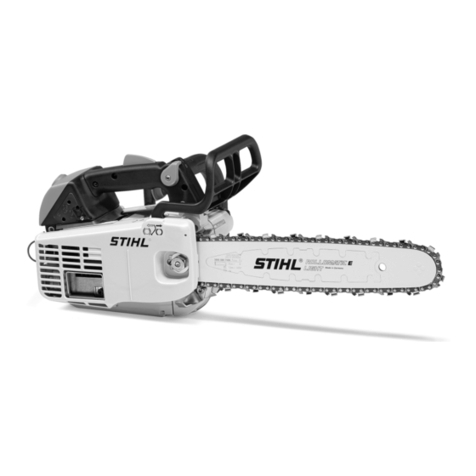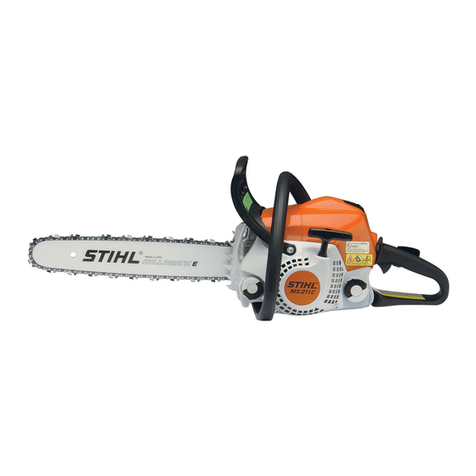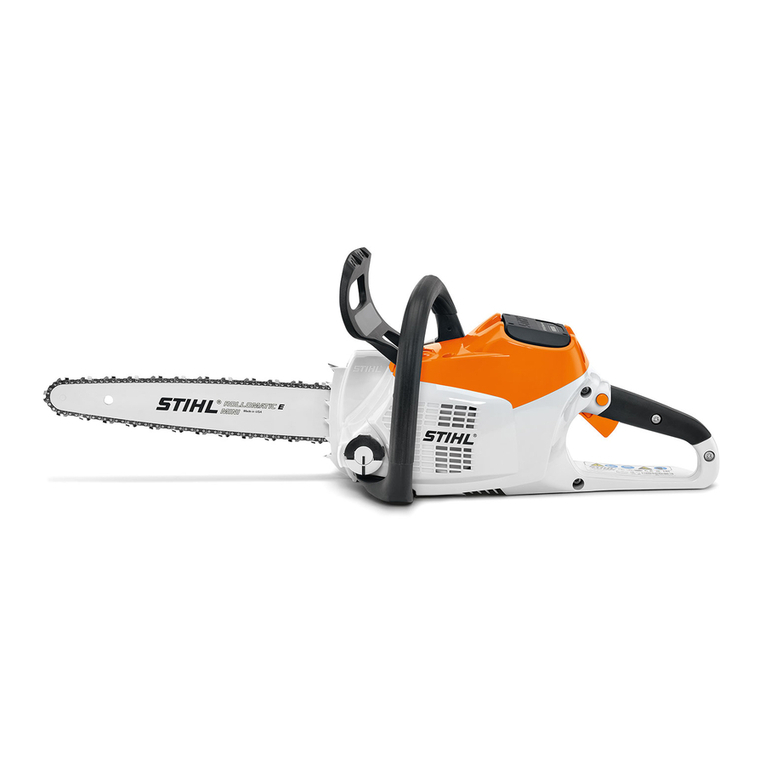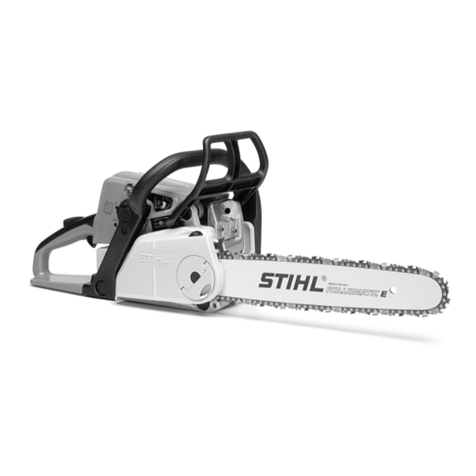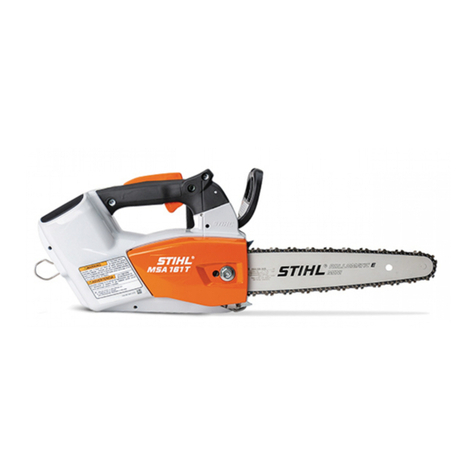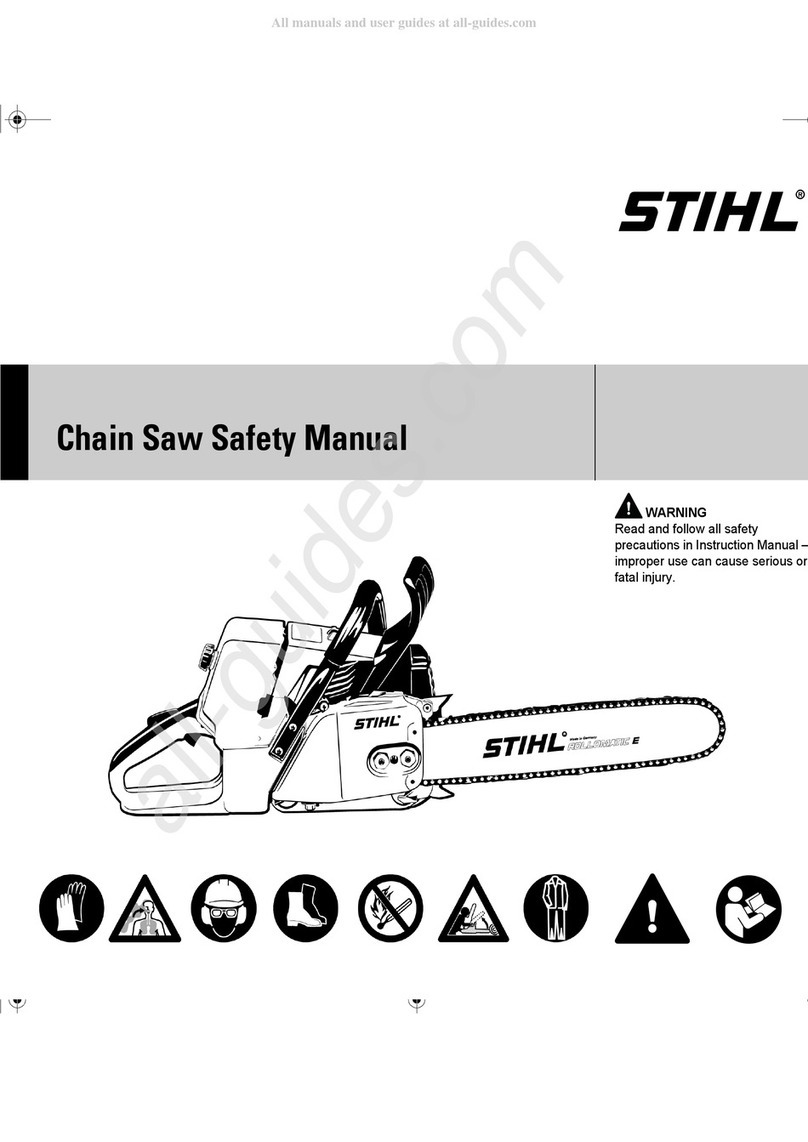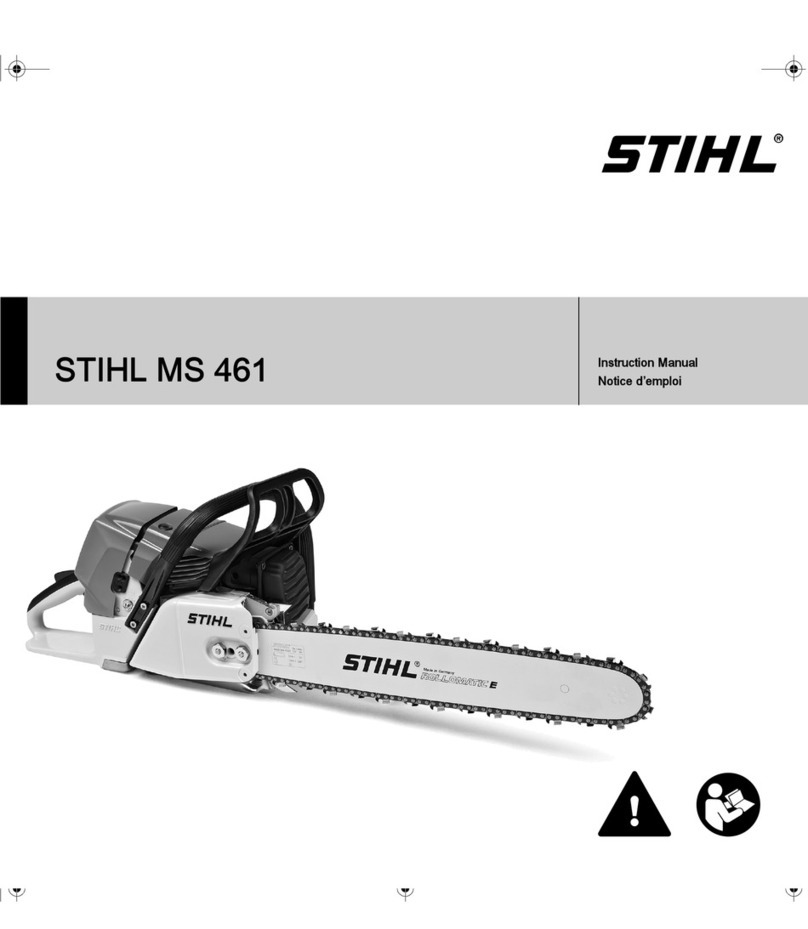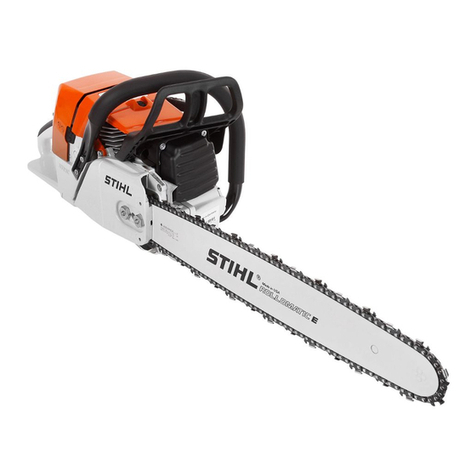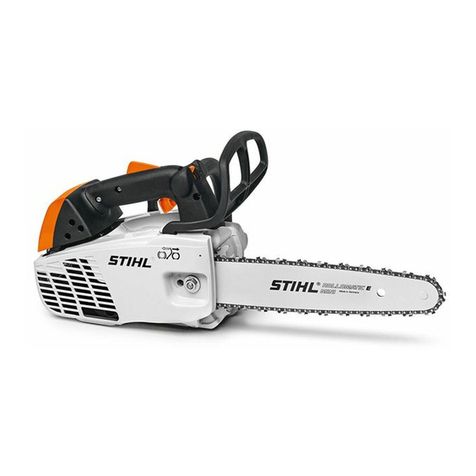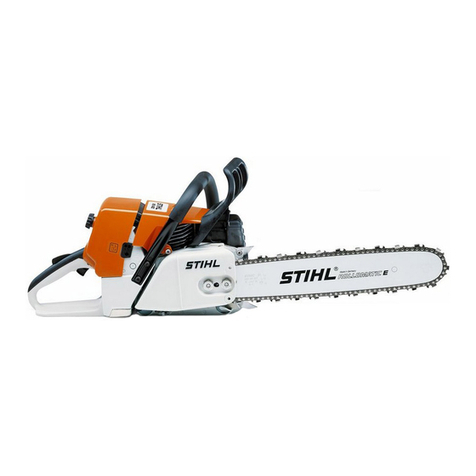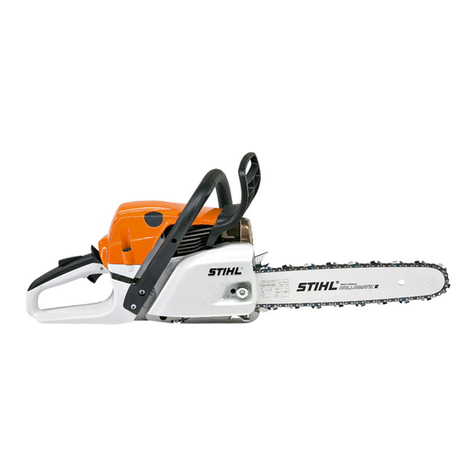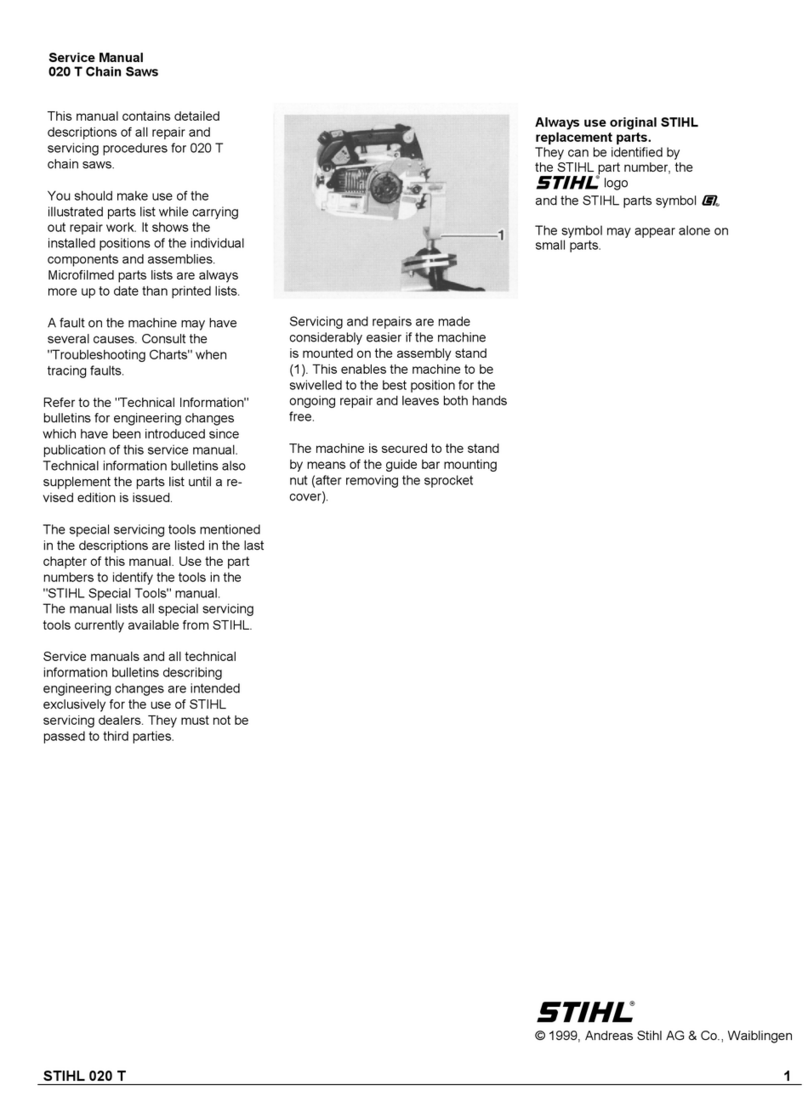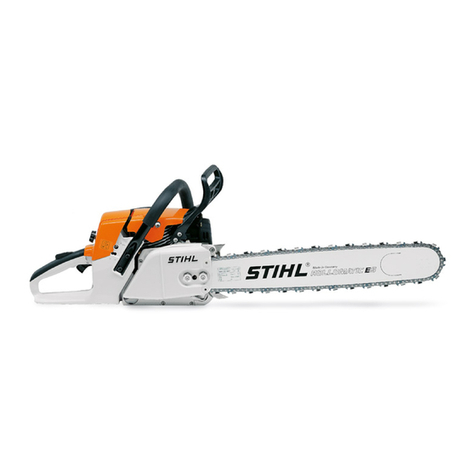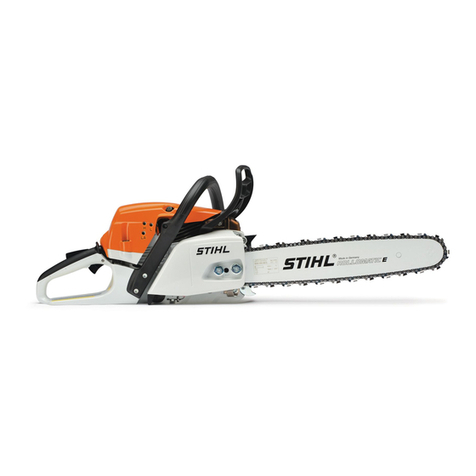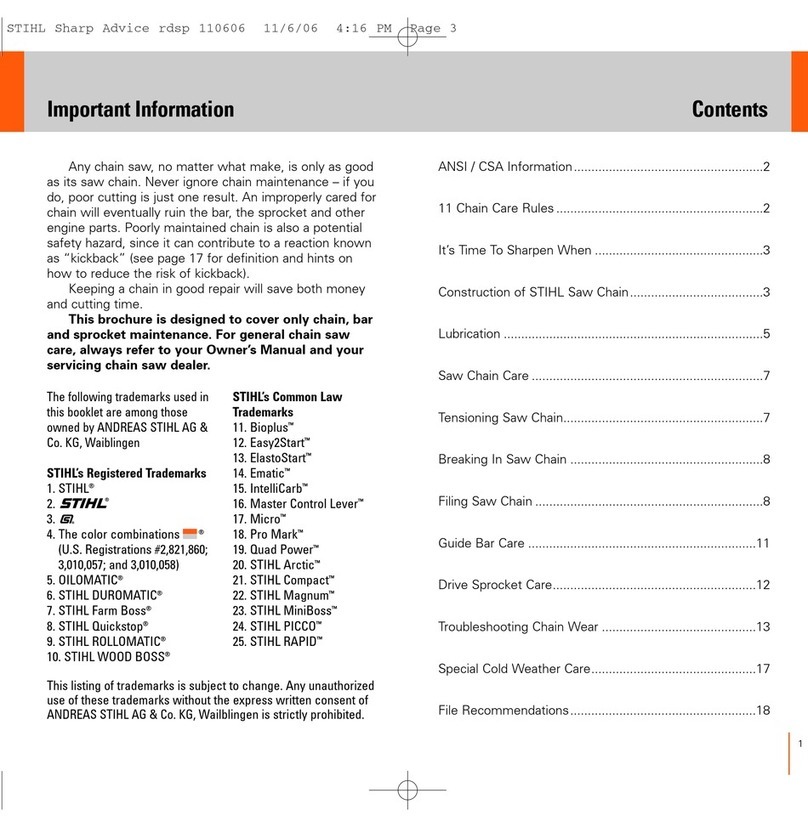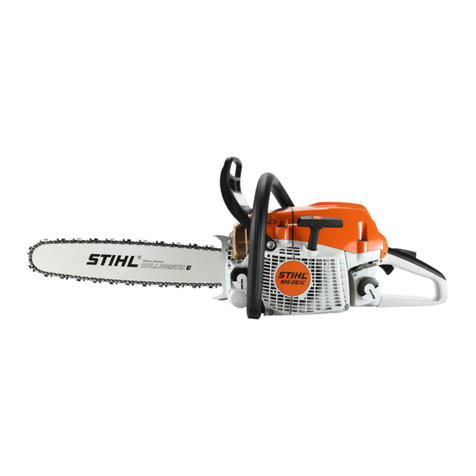
9Chain and Bar Manual
Warning !
Kickback occurs when
the moving saw chain
near the upper
quadrant of the bar
nose contacts a solid object or is
pinched. The reaction of the cutting
force of the chain causes a
rotational force on the chain saw in
the direction opposite to the chain
movement. This may fling the bar
up and back in an uncontrolled arc
mainly in the plane of the bar. Under
some cutting circumstances the bar
moves towards the operator, who
may suffer severe or fatal injury.
Kickback may occur when the nose
of the guide bar is pinched
unexpectedly, unintentionally
contacts solid material in the wood
or is incorrectly used to begin a
plunge or boring cut. It may also
occur during limbing. The greater
the force of the kickback reaction,
the more difficult it becomes for the
operator to control the saw. Many
factors influence the occurrence
and force of the kickback reaction.
These include chain speed, the
speed at which the bar and chain
contact the object, the angle of
contact, the condition of the chain
and other factors.
Devices for reducing the risk of
kickback injury
STIHL recommends the use of the
STIHL Quickstop chain brake on the
powerhead with green labeled
reduced kickback bars and low
kickback chains.
STIHL Quickstop chain brake
STIHL has developed a chain
stopping system designed to reduce
the risk of injury in certain kickback
situations. It is called a STIHL
Quickstop chain brake.
When a kickback occurs, the guide
bar may rotate around the front
handle. If the cutting position is such
that the operator’s left hand is
gripping the front handle behind the
hand guard, and if the left hand
rotates around the front handle,
contacts and pushes forward the
front hand guard, which is the
STIHL Quickstop activating lever,
this movement of the handguard is
designed to activate the STIHL
Quickstop. The chain brake on new
model STIHL chain saws can also
be activated by inertia. See the
chapter entitled "Chain Brake" in the
Instruction manual.
STIHL QS System
STIHL has developed an additional
brake system called QS that is
available on certain models. This is
identified on newer saws by a "Q“ in
the model designation. As is true on
other STIHL saws, the Quickstop
chain brake system on the Q
models can be activated manually
via the front hand guard or by inertia
in certain kickback situations and is
designed to bring the chain to a stop
within fractions of a second. A
second chain brake system can be
activated with the interlock lever by
removing the right hand completely
from the rear handle - offering
additional control in certain
circumstances. This second system
is designed to stop the chain in less
than one second.
! Warning !
A chain saw should never be
operated without a front hand
guard. In a kickback situation this
guard helps protect the left hand or
other parts of the body. In addition,
removal of the hand guard on a saw
equipped with a chain brake will
deactivate the chain brake.
!Warning !
No STIHL Quickstop or other chain
brake device prevents kickback.
These devices are designed to
reduce the risk of kickback injury, if
activated, in certain kickback
situations. In order for the STIHL
Quickstop to reduce the risk of
kickback injury, it must be properly
maintained and in good working
order. See the chapter entitled
"Chain Brake" in the instruction
manual. In addition, there must be
enough distance between the bar
and the operator to ensure that the
STIHL Quickstop has sufficient time
to activate and stop the chain before
potential contact with the operator.
!Warning !
An improperly maintained chain
brake may increase the time
needed to stop the chain after
activation, or may not activate at all.
Reduced kickback bar
STIHL green labeled reduced
kickback bars are designed to
reduce the risk of kickback injury
when used with STIHL green
labeled low kickback chains.
!Warning !
When used with other, more
aggressive chains, these bars may
be less effective in reducing
kickback.
Low kickback chain
Some types of saw chain have
specially designed components to
reduce the force of nose contact
kickback. STIHL has developed low
kickback chain for most STIHL
powerheads.
